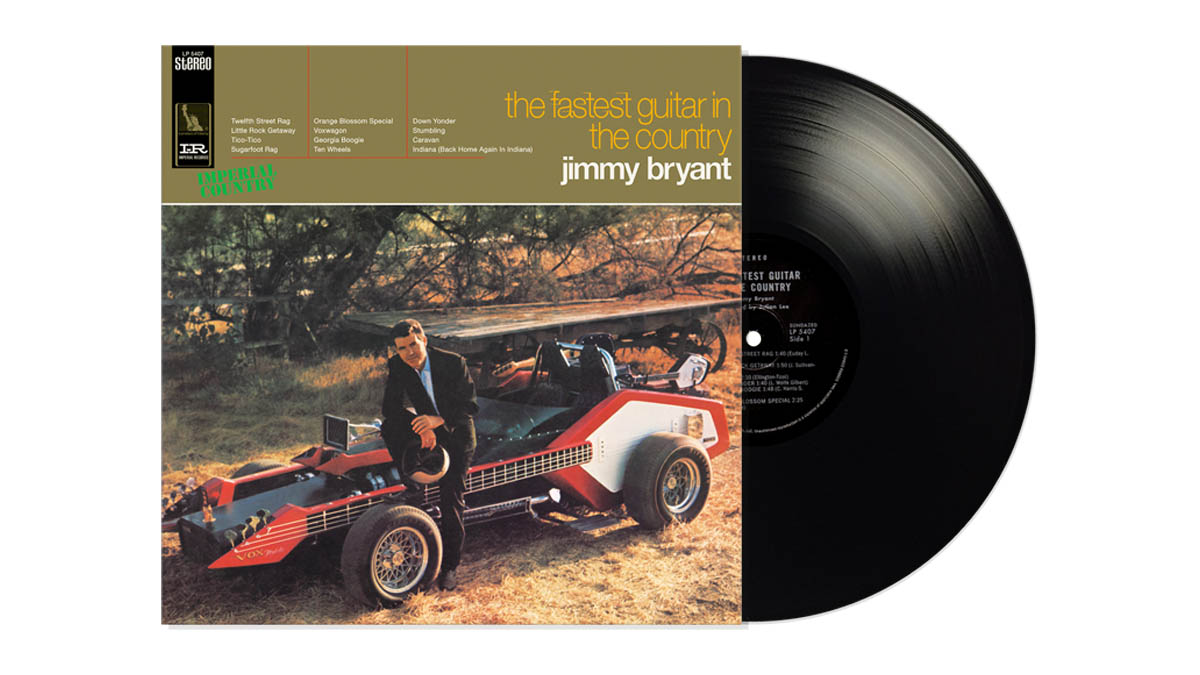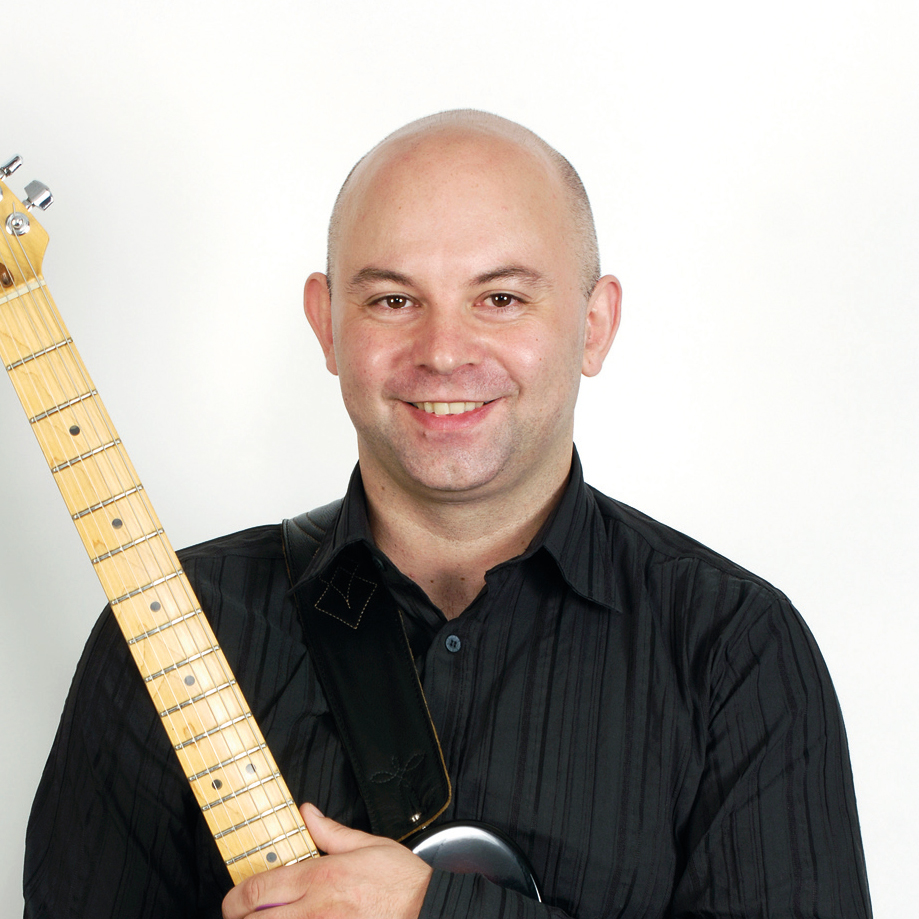“He is the fastest and cleanest and has more technique than any other”: Jimmy Bryant was one of the very first Telecaster heroes. Learn how his trailblazing playing shaped the guitarists who followed
Effortlessly mixing jazz, country and blues, Bryant was one of Albert Lee’s great influences, and his style remains a white-knuckle ride of technique and imagination

Jimmy Bryant is acknowledged as one of the first great Telecaster heroes, if not the very first. In the 1950s he released a stream of frankly terrifying instrumentals with his equally gifted collaborator, pedal steel guitarist Speedy West. Their records raised the bar in terms of technical virtuosity, while also showcasing their incredible vitality, humour and energy.
Jimmy first came to prominence with West after the pair met in LA’s Skid Row, and went on to produce all-instrumental albums that fused breakneck country with jazz, blues and bluegrass styles.
After this, Bryant maintained a career as a studio session musician and producer, before pursuing a more jazz-orientated route, recording with the legendary Herb Ellis. Bryant and West reunited in 1975 for one last album before Jimmy retired from music in 1979. Sadly he passed away the following year at the premature age of 55.
Bryant delivered his devastating musical soup with remarkable technical facility and flair. Jazz guitar icon Barney Kessel even commented, “He is the fastest and cleanest and has more technique than any other”, although Jimmy’s exemplary musicality ensured that his music was never reduced to mere displays of technical excess.
Bryant established a close connection with Leo Fender, although their relationship would become a little rocky over the years, prompting flirtations with instruments from Guild, Rickenbacker and Magnatone.

However, Jimmy is now rightly considered one of the true pioneers of the Telecaster, and in 2004 to celebrate this fact, Fender’s Custom Shop released a signature Telecaster model to honour his incredible work. The guitar was based upon his famous maple-necked white one, complete with hand-tooled leather scratchplate.
The musical examples that accompany this article are divided into four distinct sections. First, we’re looking at a set of five Bryant-inspired phrases that outline C7 moving to F7, onto C7 before moving towards G7, the fundamental harmonic moves that you need to navigate a blues.
We’re looking at establishing an effective musical idea for each of the five fretboard areas, usually associated with the accompanying chord shapes relating to movable versions of the chords C-A-G-E-D, and for this first set of examples the chords change every two bars. In the second examples, we up the ante a little by changing chord every bar, and here we’re looking at just two of the five potential areas.
Naturally, you should create ideas of your own to complete the set. The next example is somewhat more exercise-based, and defines a shortlist of potential melodic devices with which to negotiate each of the changes. These are taken directly from Bryant’s conceptual toolkit.
We bring things to a close with a concise but cohesive and contextualised solo against a quick-change 12-bar blues with a jazzy turnaround in the key of C. You’ll find that learning some of these licks can bring fresh life even to your straight-ahead blues or rock licks. Why not try it?
Get the tone
Amp Settings: Gain 3, Bass 5, Middle 5, Treble 5, Reverb 3
Bryant paired various Telecasters with tweed Fender amps, reverb and delay. We want a balanced clean tone, although the Tele gives added punch and brightness. Jimmy also used an electric 12-string guitar but uniquely configured the strings in 3rds to allow him to play incredible harmonised lines on one guitar. Check out Stratosphere Boogie to see how this sounds.
Example 1
We begin with a set of Bryant-inspired lines that negotiate the harmonic moves between I7 (C7) to IV7 (F7), back to I7 (C7) and finally onto V7 (G7).
Each chord lasts for two bars and each of the five examples is based around the five CAGED areas relating to the I7 (C7), but in each instance we’re also articulating the move towards either IV7 or V7 by choosing appropriate chord tones decorated with relevant connecting scale tones with chromatic passing notes.
Example 2
Here we see the exact same move, C7-F7-C7-G7, although this time we’re negotiating the changes a little quicker, with just one bar for each chord. Rather than explore all five fretboard areas, we restrict our gaze to the E and A forms for C7, with the F7 and G7 ideas in the same fretboard location.
Example 3
Here we’re exploring a selection of potential scale and arpeggio options to outline each of our three dominant 7th events (R-3-5-b7).
We begin in 3a) by mapping out the Mixolydian mode/scale for each chord (R-2-3-4-5-6-b7). 3b) establishes a fingering for a 7th arpeggio for each, but with the additional chromatic embellishment for each, with the b3rd moving up to 3rd (R-b3-3-5-b7). This ascent from minor to major remains even when descending each arpeggio.
In example 3c), we’re defining a dominant pentatonic (R-2-3-5-b7) for each of our chords in the same area, alternating between ascending and descending forms and we end our exercises (3d) buy juxtaposing C blues scale (C-Eb-F-Gb-G-Bb) against C7, F7 and G7, as is customary in blues based styles.
Full solo
We round up our exploration of Jimmy’s swinging style with a snappy solo based around a quick-change blues in the key of C. Make note of the I7-VI7-II7-V7 (C7-A7-D7-G7) changes in bars 7-10 and 11-12.
Bryant negotiates material like this with a combination of chord tone connections, linked with both scalar and chromatic links, although this solo exploits a little more of Jimmy’s jazz influence, in particular by adding the b9th to our VI7, II7 and V7 chords in bars 8-10.
Get The Pick Newsletter
All the latest guitar news, interviews, lessons, reviews, deals and more, direct to your inbox!
John is Head of Guitar at BIMM London and a visiting lecturer for the University of West London (London College of Music) and Chester University. He's performed with artists including Billy Cobham (Miles Davis), John Williams, Frank Gambale (Chick Corea) and Carl Verheyen (Supertramp), and toured the world with John Jorgenson and Carl Palmer.
"Upgrading from your entry-level acoustic opens the door to an entirely new world of tonewoods, body shapes, and brands": 6 signs it's time to upgrade from your first acoustic guitar
"I'm past my prime": 5 common excuses for not learning the guitar – and 5 body and mind-boosting reasons you should









![Joe Bonamassa [left] wears a deep blue suit and polka-dotted shirt and plays his green refin Strat; the late Irish blues legend Rory Gallagher [right] screams and inflicts some punishment on his heavily worn number one Stratocaster.](https://cdn.mos.cms.futurecdn.net/cw28h7UBcTVfTLs7p7eiLe.jpg)


